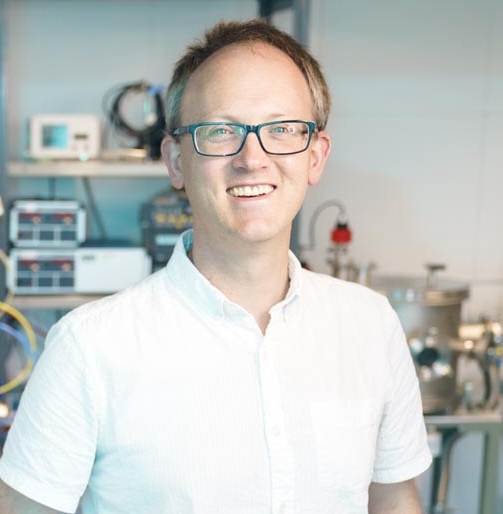
Professor Stuart Reid
Head Of Department
Biomedical Engineering
Back to staff profile
Prize And Awards
- Appointed member of the Royal Society's Research Grants Board
- Recipient
- 1/1/2020
- Chair of the LSC Optics Working Group
- Recipient
- 28/3/2019
- FRSE
- Recipient
- 1/3/2019
- International Advisor to the Stanford-led Centre for Coatings Research (CCR)
- Recipient
- 1/9/2017
- Royal Society Wolfson Merit Award
- Recipient
- 1/8/2017
- Herald Scotland – best research project – “Nanokicking”
- Recipient
- 1/7/2017
Back to staff profile
Publications
- Search for gravitational waves emitted from SN 2023ixf
- Abac A G, Ben Yaala M, Craig K, Fazio M, Gier C, Reid S, Wallace G S, , ,
- The Astrophysical Journal Vol 985 (2025)
- https://doi.org/10.3847/1538-4357/adc681
- Vibration-based cell engineering
- Johnson-Love Olivia, Salmeron-Sanchez Manuel, Reid Stuart, Childs Peter G, Dalby Matthew
- Nature Reviews Bioengineering Vol 3, pp. 408-429 (2025)
- https://doi.org/10.1038/s44222-025-00273-x
- Search for continuous gravitational waves from known pulsars in the first part of the fourth LIGO-Virgo-KAGRA observing run
- Abac A G, Ben Yaala M, Craig K, Fazio M, Gier C, Reid S, Wallace G S,
- The Astrophysical Journal Vol 983 (2025)
- https://doi.org/10.3847/1538-4357/adb3a0
- Upscaling manufacture of osteogenically differentiated mesenchymal stem cells using nanoscale vibration and microcarrier suspension culture
- Williams Jonathan, Dalby Matthew J, Salmerón-Sánchez Manuel, Childs Peter, Reid Stuart
- 7th Termis World Congress (2024)
- https://doi.org/10.1089/ten.tea.2024.06979.abs
- Developing and investigating a nanovibration intervention for the prevention/reversal of bone loss following spinal cord injury
- Williams Jonathan A, Campsie Paul, Gibson Richard, Johnson-Love Olivia, Werner Anna, Sprott Mark, Meechan Ryan, Huesa Carmen, Windmill James FC, Purcell Mariel, Coupaud Sylvie, Dalby Matthew J, Childs Peter, Riddell John S, Reid Stuart
- ACS Nano Vol 18, pp. 17630-17641 (2024)
- https://doi.org/10.1021/acsnano.4c02104
- Optical properties of germania and titania at 1064 nm and at 1550 nm
- Diksha D, Amato A, Spagnuolo V, Mcghee G i, Chicoine M, Clark C, Hill S, Hough J, Johnston R, Keil R, Mavridi N, Reid S, Rowan S, Schapals T, Schiettekatte F, Tait S c, Martin I W, Steinlechner J
- Classical and Quantum Gravity Vol 41 (2024)
- https://doi.org/10.1088/1361-6382/ad3c8c
Back to staff profile
Professional Activities
- High throughput mechanical phenotyping of nano vibrated mesenchymal stem cells using real time deformability cytometry
- Speaker
- 10/6/2024
Projects
- BIOME: Bioplastic Injection-moulding Optimisation and Microplastics Evaluation
- Bomphray, Iain (Principal Investigator) Reid, Stuart (Co-investigator) Seth, Sampan (Co-investigator) Shu, Will (Co-investigator)
- 01-Jan-2025 - 31-Jan-2026
- EPSRC DTP - The impact of spinner flask culture on extra cellular vesicle production
- Jimenez, Melanie (Principal Investigator) Reid, Stuart (Co-investigator) Childs, Peter (Co-investigator)
- 01-Jan-2025
- Leonardo consultancy March-October 2025
- Reid, Stuart (Principal Investigator)
- 01-Jan-2025 - 31-Jan-2025
- Helia Photonics - thin films to assess diffusion at interfaces
- Reid, Stuart (Principal Investigator)
- 01-Jan-2025 - 31-Jan-2025
- MAINSTREAM: EPSRC research and partnership hub for health technologies in manufacturing stem cells
- Childs, Peter (Principal Investigator) Jimenez, Melanie (Co-investigator) Reid, Stuart (Co-investigator)
- 13-Jan-2025 - 12-Jan-2031
- ViVitro SuperPump Pulsatile Pump
- Kerr, Monica Mary (Principal Investigator) McCormick, Christopher (Co-investigator) Reid, Stuart (Co-investigator) Stewart, Iain William (Co-investigator) McKee, Sean (Co-investigator) Wheatley, David (Visiting Academic) Seed, Elizabeth (Post Grad Student)
- Total equipment cost of £29,200 with £19,200 awarded from EPSRC Core Equipment Fund and £10,000 contribution from BME.
- 01-Jan-2025 - 30-Jan-2026
Back to staff profile
Contact
Professor
Stuart
Reid
Head Of Department
Biomedical Engineering
Email: stuart.reid@strath.ac.uk
Tel: 548 3137
